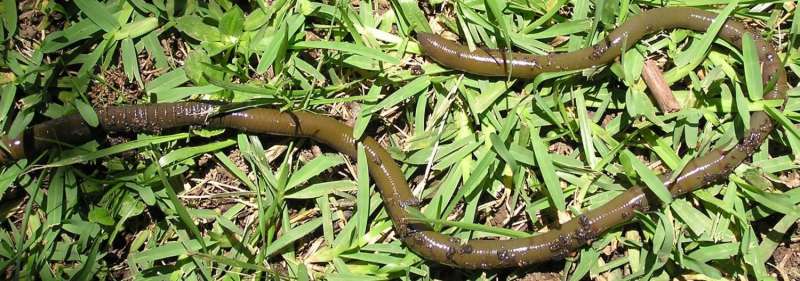Conservation and nameless earthworms: Assessors in the dark?

Species that live exclusively in a single region are at a particular risk of extinction. However, for them to be protected, thorough assessments of the environmental impacts need to be performed.
There are more than 100 earthworm species living in the soil and dead wood of KwaZulu-Natal Province, South Africa. Most of them live exclusively in small regions in the province, which makes them extremely vulnerable.
To scientists Dr Adrian J. Armstrong, Ezemvelo KZN Wildlife, and Ms Thembeka Nxele, KwaZulu-Natal Museum, the problem is twofold. Firstly, they note that the expression "out of sight, out of mind" is very suitable for the case of the endemic earthworms in South Africa. Secondly, they point out that the lack of common names for these species is a stumbling block that hinders their inclusion in conservation assessments.
As a result, the researchers try to rectify this situation by assigning standardised English names to the endemic earthworms in KwaZulu-Natal. Their article is published in the open access journal African Invertebrates.
Scientific names are often intractable to non-specialists, and the lack of common names leaves environmental assessors in the dark when they need to figure out which earthworms may occur at a development site. In the meantime, it has been found that about 50% of the native vegetation in KwaZulu-Natal has already been removed as a result of infrastructure construction and the figure is rising.
"The indigenous earthworms generally don't survive in developed areas," say the authors.
For instance, the informal use of an English name (green giant wrinkled earthworm) for the species Microchaetus papillatus, has facilitated the inclusion of this species in environmental impact assessments in KwaZulu-Natal.
While the green giant wrinkled earthworm does occur in a relatively large and rapidly developing area in KwaZulu-Natal, other species live in smaller areas that have been urbanised even more.
The extinction of these earthworms is not only undesirable from the point of view of biodiversity advocates - the role of this group of soil organisms is impossible to replace fully with non-native earthworms. For example, some of the large indigenous earthworms (more than 1 m in length) burrow much deeper than the non-native species, thereby enriching and aerating the soil at greater depth.
The authors are hopeful that by giving the indigenous earthworms in KwaZulu-Natal common names, the threatened and endemic species will be conserved through inclusion in environmental impact assessments. Furthermore, they believe that earthworms could draw attention to the areas where they occur whenever a choice for new protected areas is to be made.
More information: Adrian John Armstrong et al, English names of the megadrile earthworms (Oligochaeta) of KwaZulu-Natal, African Invertebrates (2017). DOI: 10.3897/AfrInvertebr.58.13226
Provided by Pensoft Publishers




















